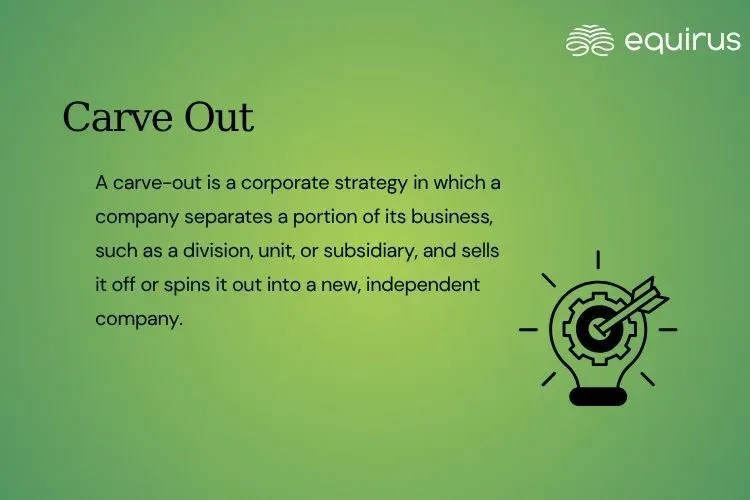Carve Out

Key Highlights
-
A carve-out is a corporate strategy in which a company separates a portion of its business, such as a division, unit, or subsidiary, and sells it off or spins it out into a new, independent company.
-
Companies pursue carve-outs for several strategic or financial reasons including unlock hidden value, focus on core operations, raise capital, regulatory pressure and prepare for full spin-off.
What is a Carve-Out?
A carve-out is a corporate strategy in which a company separates a portion of its business, such as a division, unit, or subsidiary, and sells it off or spins it out into a new, independent company.
The original (parent) company may:
-
Sell a stake in the unit to outside investors (partial carve-out), or
-
Fully separate it through a new public listing or sale (full carve-out).
Why Companies Do Carve-Outs?
Companies pursue carve-outs for several strategic or financial reasons:
-
Unlock Hidden Value: The carved-out business might perform better as an independent entity.
-
Focus on Core Operations: Allows the parent company to focus on its main business.
-
Raise Capital: Selling part of the business can raise funds without taking on debt.
-
Regulatory Pressure: Carve-outs can help comply with antitrust or government rules.
-
Prepare for Full Spin-Off: Sometimes it’s the first step before a complete separation.
Types of Carve-Outs
1. Equity Carve-Out (ECO)
-
The parent company sells a minority stake (often <20%) in a subsidiary via an IPO.
-
The carved-out business becomes a publicly traded company.
-
Example: Siemens carved out its healthcare unit, Siemens Healthineers, through an IPO.
2. Asset Carve-Out
-
Specific assets or business lines are sold directly to another firm.
-
No new company is formed.
-
Example: A telecom company selling off its tower infrastructure.
3. Spin-Off vs. Carve-Out
-
A spin-off distributes shares of the new company to existing shareholders with no capital raised.
-
A carve-out typically involves raising money by selling shares to new investors.
Real-World Examples
-
HPE & HPI: Hewlett-Packard carved out its enterprise business (HPE) and PC/printer business (HPI) into two separate public companies.
-
PayPal from eBay: Initially carved out and eventually became a fully independent company due to investor pressure.
-
Vedanta: Vedanta Ltd. has considered carving out its businesses like aluminium and oil & gas into separate entities.
Benefits of a Carve-Out
1. Market Clarity: Each entity can be better understood and valued by investors.
2. Operational Focus: Both parent and carve-out entity can work on their strengths.
3. Improved Management: Separate leadership teams with specialized skills.
4. Liquidity: Raises capital without giving up control of the parent company.
Challenges and Risks
1. Complex Execution: Legal, financial, and operational complexities involved.
2. Brand Dilution: The new entity might lose benefits of the parent’s brand.
3. Cultural Shift: Employees may face disruption or uncertainty.
4. Market Reaction: If not well-received, stock prices of the parent or new company may drop.
